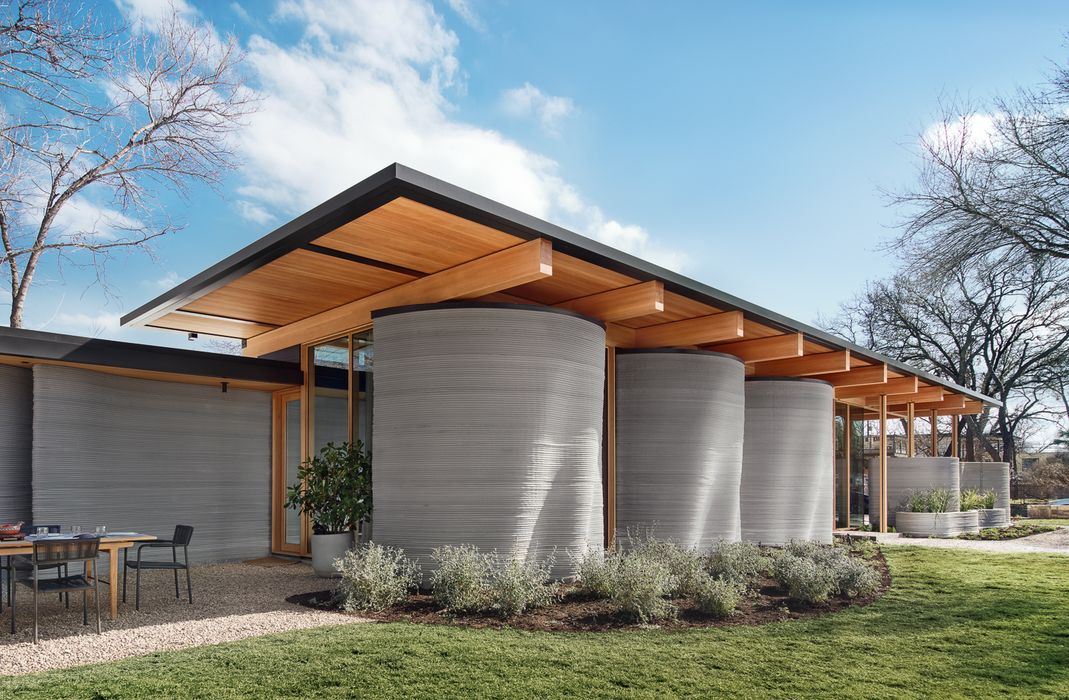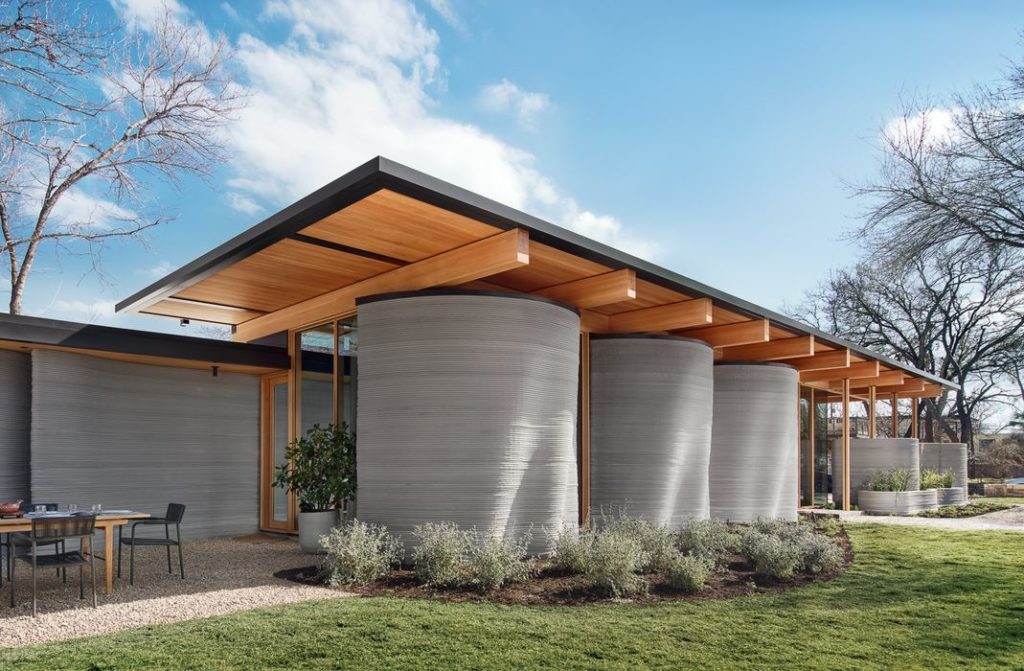
Construction 3D printer manufacturer ICON revealed a prototype 3D printed house design they call “House Zero”.
The company’s Vulcan II construction 3D printer is capable of building structures using their cement-based proprietary building material, Lavacrete. To date they have undertaken quite a number of building projects, completing a number of homes. Note that their technology only provides the concrete portions of the building, and the remainder of the build project is done by traditional trades.
Recently they landed a deal to 3D print a neighborhood of 100 homes, and later announced yet another massive investment round, yielding the company nearly half a billion dollars in funding. At that level, they can take on any conceivable project.
There could be a clue in what’s coming up for ICON with their announcement today of “House Zero”.
House Zero
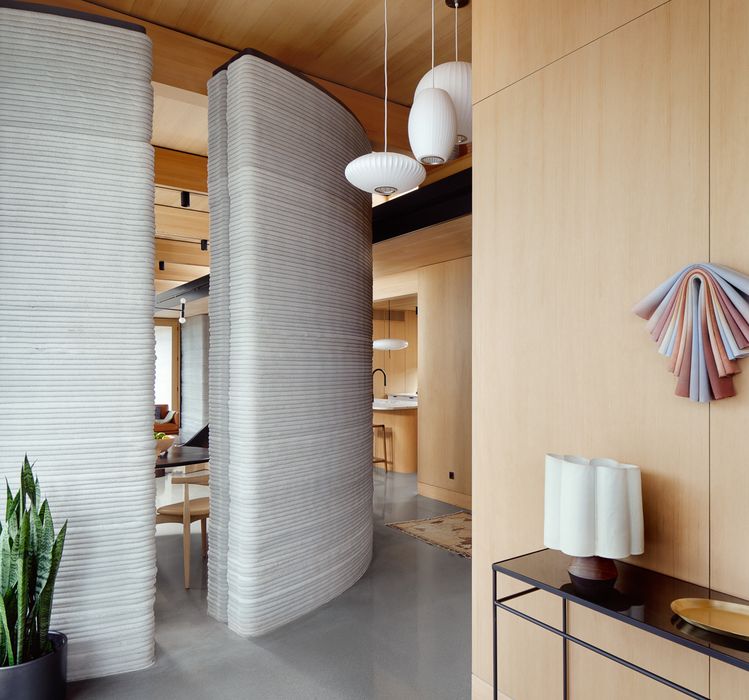
This is a prototype 3D printed home that has quite a difference from not only normal homes but also from other 3D printed homes. Although it sports three bedrooms, 2.5 baths in its 2000sf footprint, there are major differences.
They’re addressing a concern I’ve had for many years: if 3D printing can produce any reasonable geometry with the same energy and materials, why aren’t 3D printed concrete structures using radical designs? Most times they are simply analogs of conventional designs with square sides and walls.
This has always puzzled me because the reason today’s homes are square is because that’s the shape standard building materials have. If you build something by assembling straight and square objects, your result will also be straight and square.
There are no such restrictions with 3D printing. Concrete structures can take on unusual curves and shapes unimaginable by conventional home builders.
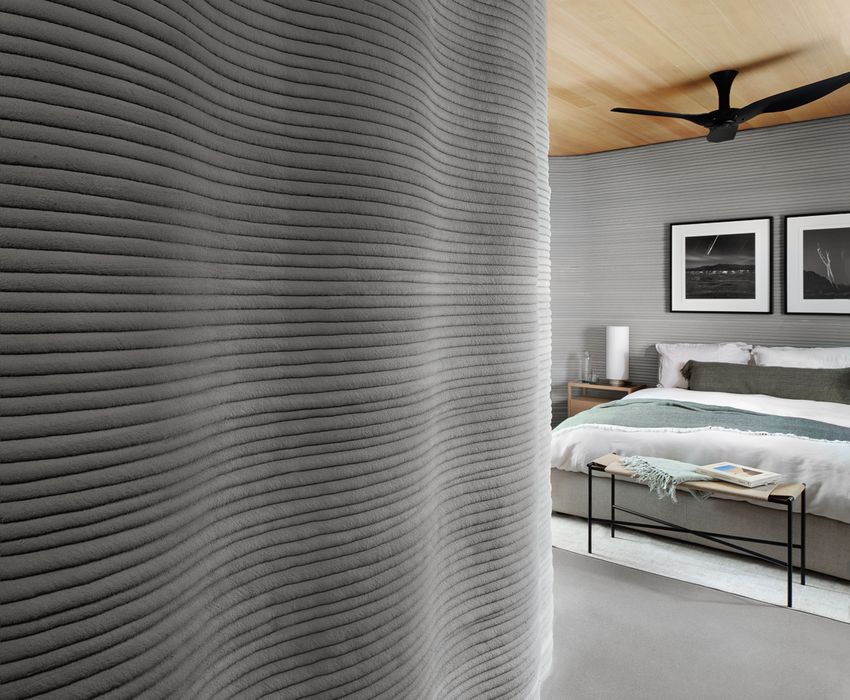
This is reminiscent of the early days of polymer 3D printing, where businesses tried to use the 3D printers of the day to remake the same old parts they have always used. Usually they discounted 3D printing because “it was more expensive than what we are already doing, thanks”. In fact, those old parts were literally designed specifically for the older making technologies, not for additive approaches.
It took many years for the polymer part manufacturers to realize they could actually do incredibly different designs using the technology. It also took new CAD software to open up those possibilities to everyone. Today we see radically new polymer parts all the time.
Not yet so in construction 3D printing, but with House Zero, ICON may have taken a step in that direction.
The design of House Zero actually does attempt to leverage 3D printing’s ability to create unusual geometries. There are mostly curved walls, both inside and outside the structure, which makes for a very different look and feel.
ICON explained the House Zero design, which was created by Lake|Flato:
“Blending mid-century modernist ranch house aesthetics, the home features an elevated architectural and energy efficient design that highlights the benefits of resiliency and sustainability, with the digital possibilities of additive construction.”
ICON CEO Jason Ballard said:
“House Zero is ground zero for the emergence of entirely new design languages and architectural vernaculars that will use robotic construction to deliver the things we need most from our housing: comfort, beauty, dignity, sustainability, attainability, and hope. Houses like this are only possible with 3D printing, and this is the new standard of what 3D printing can mean for the world. My hope is that this home will provoke architects, developers, builders, and homeowners to dream alongside ICON about the exciting and hopeful future that robotic construction, and specifically 3D printing, makes possible. The housing of our future must be different from the housing we have known.”
There’s a lot of words there, but the ones that stuck out to me were “DESIGN LANGUAGE”. That’s code for “doing the design differently”, and it’s very satisfying to see that a major construction 3D printer manufacturer has recognized this.
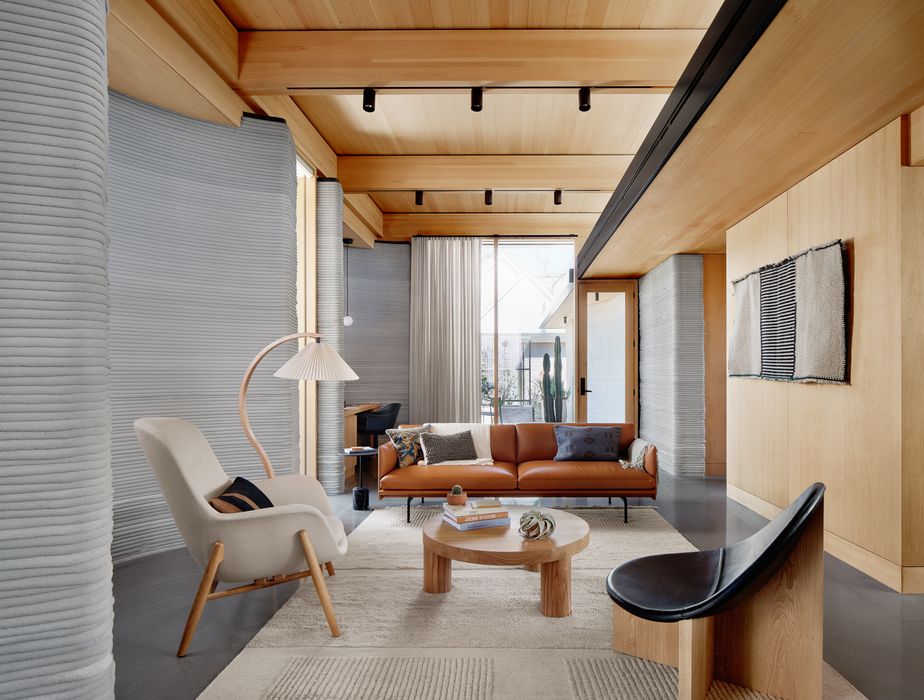
Polymer part production grew because the radical new designs could exploit ideas that could not be done before. The same effect must take place in the construction 3D printing business.
What are those new design features that will make “home+”?
ICON just took the first step towards that future.
Via ICON

